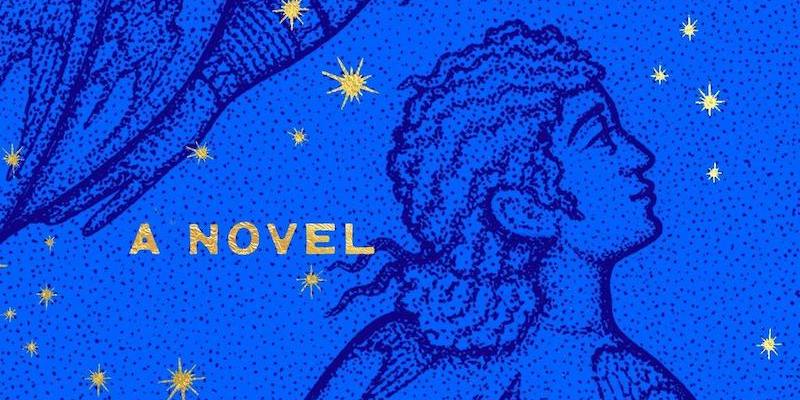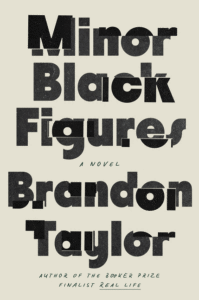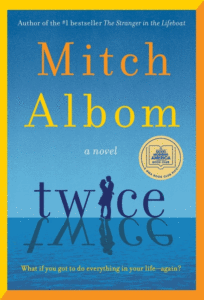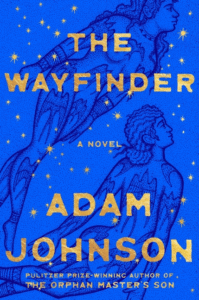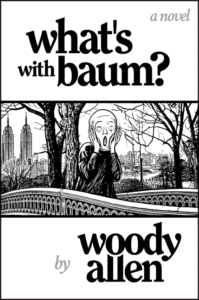Our bevy of brilliant reviews this week includes David Canfield on Brandon Taylor’s Minor Black Figures, Ron Charles on Mitch Albom’s Twice, Ian McGuire on Adam Johnson’s The Wayfinder, Randy Boyagoda on Woody Allen’s What’s With Baum?, and David Schurman Wallace on Marguerite Young’s Miss MacIntosh, My Darling.
Brought to you by Book Marks, Lit Hub’s home for book reviews.
*
“In his work, Taylor has detailed the grind of a hospice-care shift, the power politics of a niche academic landscape, the microscopic focus required for restoring a forgotten Black artist’s work. This extends to the bedroom: Taylor ranks among our most gifted writers of gay sex, down to recurring inspections of penile hygiene. Wyeth and Keating’s first encounter winds toward a release as graphic as it is moving, one that ‘had a tingling aftermath like epiphany.’ Plus, it’s sexy as hell.
…
“Minor Black Figures…is Taylor’s most accomplished novel—a sustained, idiosyncratic portrait of an artist. Our hero takes a galvanizing interest in culture; lengthy lists of painters, filmmakers and writers pop into his head and onto the page. Taylor’s cerebral bent is nothing new, but here, it’s imbued with a fresh, tentative sweetness, and anchored by a genuinely swoony summer romance. The novel can get busy—Taylor introduces each of Wyeth’s studio mates in the first chapter, then all but abandons half of them to squeeze in more significant characters—but there’s a warmth in the overcrowding. It gives the novel a generously queer sheen, the random kisses teetering between friendly and erotic, contrasting the dry bitchiness of the banter that precedes them.
Through Wyeth, Taylor interrogates the impossible standards put upon Black artists who may or may not want to comment on terrible things happening in the world, who may or may not want to foreground their race. ‘When you’re Black and you paint, you’re already going to be compared to whatever three Black painters that critic has seen,’ Wyeth laments. It’s a deeply human moment—and you can sense the author himself coming through.
Wyeth contains clear autobiographical shades of Taylor. Like Taylor, he was born in the South, attended graduate school in the Midwest and now lives in New York. But I wouldn’t go so far as to call him, say, Taylor’s take on Lily Briscoe, Virginia Woolf’s stand-in painter in To the Lighthouse. Minor Black Figures shrewdly insists that Wyeth exist on his own terms by examining his creative evolution. Taylor makes a persuasive case for how artists can grow, if incrementally and maybe bitterly, amid so much numbing digital noise. Wyeth cannot control the perception of his paintings. There’s an earned wisdom in his journey to setting that fact aside, forging ahead while realizing his own inherent, subtle political bent.”
–David Canfield on Brandon Taylor’s Minor Black Figures (The New York Times Book Review)
“Mitch Albom’s new novel, Twice, is about a man with the miraculous ability to travel back to any point in his life and make a different choice. A few hours after starting Twice, I knew exactly which choice I would make differently. But alas, here we are.
…
“Welcome to ‘Tuesdays With Billy Pilgrim’ … for all his godlike ability to relive time, Alfie enjoys an adolescence furnished with modular events picked up from Ikea’s fiction department: friends daring him to ring the doorbell of a scary woman’s house; bullies taunting his sensitive Black friend; a cute girl kissing him during Seven Minutes in Heaven. These generic moments skim by like we’re watching The Wonder Years at triple speed.
…
“As Alfie gets older, he gets bolder, but Albom grows no more interested in making his experiences engaging. It’s as though Alfie’s ability to cheat consequences has drained urgency from the prose. Secure in the knowledge that he can relive any moment, Alfie has ‘leapt off a mountain in Spain, dived into a pool of sharks in Australia, stood in front of an oncoming train in China.’ That litany of adventures demonstrates the abiding flaw of Twice: The narration is utterly colorless. Absolved of the possibility of death, the novel suffers the ennui that vampires endure. Alfie’s memory of taking ‘a bullet during a Mexican bank robbery’ feels less vibrant than my memory of dinner at the Olive Garden.
It’s astonishing that a man who’s sold tens of millions of copies, an author who presumably has access to the finest editors in the business, can continue to produce lines that feel so synthetic and recycled.”
–Ron Charles on Mitch Albom’s Twice (The Washington Post)
“Some novelists return again and again to the same patch of ground and the same set of moral or emotional concerns, excavating a little deeper each time and finding virtue, nuance and richness in their self-imposed constraints. We might think of Faulkner’s Yoknapatawpha County, Elizabeth’s Strout’s small-town Maine or Richard Ford’s suburban New Jersey: places that may seem ordinary or even dull, but actually contain multitudes.
The novelist Adam Johnson is not a writer of that doggedly persistent kind. In fact, quite the opposite. What makes his writing distinctive is not its sameness but rather its range and variety. The Orphan Master’s Son, which won a Pulitzer Prize in 2013, follows a North Korean man struggling to survive amid the cruelty and madness of a modern totalitarian regime. The 2015 collection Fortune Smiles includes stories set in East Germany, Seoul, Louisiana and a near-future Silicon Valley. Now, in his hugely ambitious new novel, The Wayfinder, Johnson takes the reader to the scattered islands of the South Pacific to tell the story of an ancient Tongan maritime empire and its discontents.
…
“Though Johnson’s recent fiction is determinedly, even extravagantly, eclectic in setting and subject matter, it nonetheless displays a consistent style and tone. His writing is lavishly detailed and sharply intelligent, nuanced and lyrical but also funny and sometimes surreal. Although he often addresses extreme violence and suffering, his work is rarely somber or morbid, treating even the worst atrocities with a brisk, leavening wit.
All of those impressive qualities are present in The Wayfinder, which is a thoroughly surprising and enjoyable read. It’s a sprawling novel that combines myth, poetry and magical realism into a great roiling, oceanic mass; the narrative may lack focus and a clear direction at times but never wants for inventiveness or energy. Its world is one where the souls of the dying can be extracted and then stored in coconut shells to be consulted in times of crisis, where lonesome parrots recite epic poetry, where corpses can be brought to life with a magic fan.”
–Ian McGuire on Adam Johnson’s The Wayfinder (The New York Times Book Review)
“He has made some of the most intelligent and enjoyable movies in modern American cinema—Annie Hall, Hannah and Her Sisters and, above all else, Manhattan, amid so many lovely divertissements, including Manhattan Murder Mystery and Everyone Says I Love You—but for years Woody Allen has been a pariah figure over allegations of sexual abuse involving his adopted daughter Dylan Farrow, amid a larger swirl of gossipy intrigue and legal proceedings involving his partner Mia Farrow and her adopted daughter, Soon-Yi Previn.
These unresolved controversies, none of which has resulted in formal charges, do not change the fact of Allen’s signal artistic accomplishments as a film-maker. But now he has made the terrible decision, with his first work of fiction, of taking inspiration from their effects on his life and reputation, in tandem with his long-standing practice of autobiographical protagonist-making, as in so many of his films.
…
“The prose is flaccid … The novel’s driving force—Baum’s fussy, anxious dialogue with himself about his many problems, physical and mental—is a monotone of narcissistic kvetching. The book has a contemporary setting (‘We did the COVID test’), but neither the internet nor computers seem to exist. Occasionally, characters call each other on their ‘cellphones.’ When a bona fide literary scandal breaks late on, Baum is certain that people will come to hear of it in a couple of days, via the newspapers and tabloids. Our hero—who, if he actually were middle-aged, would have grown up around the 1970s—clips articles for friends to read, fondly remembers listening to Duke Ellington on a ‘phonograph’ in his youth, and offers to ‘put up the tea kettle’ for a conversation with an ‘old comrade in ideas.’ At one point, atypically exhilarated, in this case by the prospect of new love, he thinks, ‘This is a film … I am in a movie. I am framed in celluloid.’
In other words, what’s with Baum is that he’s a poorly clapped-together stand-in for an eighty-nine-year-old celebrity film-maker, and the poor shmuck is meandering through a novel guaranteed to ensure only the tedium levels of readers will be aroused to the max.”
–Randy Boyagoda on Woody Allen’s What’s With Baum? (Times Literary Supplement)
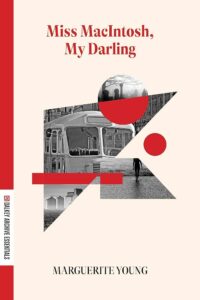
“Marguerite Young’s 1965 cult novel Miss MacIntosh, My Darling is known foremost for being a book almost no one has finished. As I waded through dense paragraphs of long, winding sentences filled with images of stars and waves and angels, of seagulls and silk and butterflies, of dreams and illusions and any other abstraction you can imagine, occasionally I felt angry—on a personal level—at what I took to be the book’s obstinacy, its willingness to reprise what it had said hundreds of times before, not to mention the seemingly endless detours that defy any obvious sense of structure. At other moments, I knew that I was immersed in something beautiful and strange, something too big to understand all at once.
…
“As its branches grow, the novel detours to other characters, including Cousin Hannah, a globe-trotting suffragette who fights to emancipate women worldwide in Orientalist torrents of language. Everywhere the prose embraces overabundance: in the novel’s present Vera speaks with a waitress named Esther Longtree, who is known for her ‘everlasting pregnancy’—her life is marked by a perpetual series of miscarriages—a painful condition that one can’t help but connect to Young’s prolonged struggle to birth her novel. Everyone seems to symbolize something…but the oceanic flood of writing itself is always carrying them away, just beyond intelligibility.
…
“It’s never entirely clear why Vera goes looking for MacIntosh if she is already presumed dead, but this is in keeping with the novel’s protective attitude toward the unlikely, even the impossible. The search for Miss MacIntosh, then, is nothing less than the search for a boundary or form that can contain Vera’s—and, by extension, Young’s—supercharged consciousness, with the lurking acknowledgment that any hope of coherence may be already lost. So the dream continues to grow to prodigious proportions. To read Young’s novel is to dwell in uncertainties and shadows, in Jungian archetypes and their dissolution.
…
“If the reader is to have pleasure, it is of a more ambient than semantic kind, like spending time in front of a Rothko painting. If you can slow down, suspend the rush to reach the end of the sentence, there can be beauty in duration itself.”
–David Schurman Wallace on Marguerite Young’s Miss MacIntosh, My Darling (The New York Review of Books)
